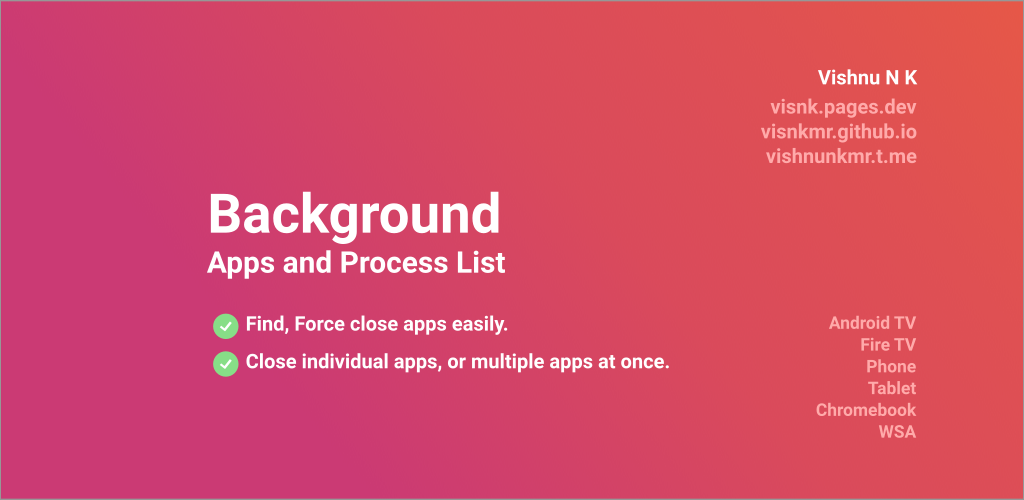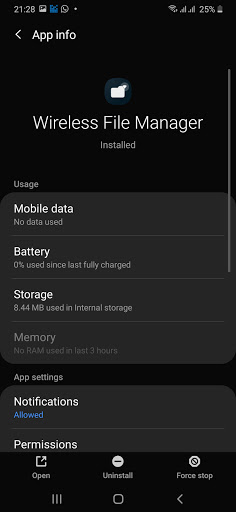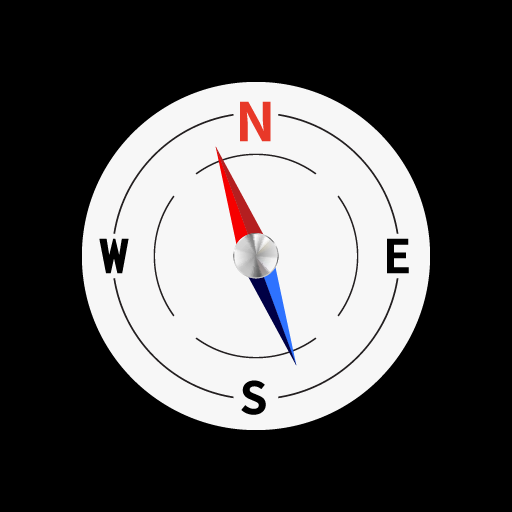Force close apps that may be running in the background on your Android


| Name | Background Apps & Process List |
|---|---|
| Publisher | Vishnu N K |
| Genre | Tools |
| Size | 2MB |
| Version | 1.3G17i |
| Update | April 8, 2025 |
| Get it On | Play Store |
| Report | Report Apps |
Preview
Understanding Background Apps and Process Lists on Your Device
If you’ve noticed your Windows PC, Android phone, or smart tablet slowing down without any obvious cause, background apps and processes might be the culprit. These silent performers can impact everything from system performance to battery life. But how do they work, why are they important, and how can you manage them effectively?
This guide will walk you through what background apps and processes are, their impact on your device, and how to optimize your system for peak performance.
What Are Background Apps and Process Lists?
At any given moment, your device is running more than just the apps or programs you see on the screen. Background Apps and Process Lists are programs that run behind the scenes, performing critical tasks like syncing data, sending notifications, or updating software. Similarly, background processes include components of the operating system or apps required to keep everything running smoothly, even if you don’t actively engage with them.
For example, things like email syncing, antivirus software, push notifications, and even certain widgets rely on these background processes to function. While these tasks are necessary, left unchecked, they can eat up your device’s resources.
Why Do Background Apps Matter?
Background apps and processes play a dual role in your system’s ecosystem, offering both benefits and challenges depending on how well they are managed.
Why They Are Essential
- Multitasking: Apps like music players or file uploaders remain active in the background so you can multitask seamlessly.
- Notifications: Messaging apps and email clients rely on background processes to keep you notified in real-time.
- System Updates: Background tasks ensure your operating system and apps are up-to-date, offering improved security and functionality.
Why They Can Be Problematic
- Performance Drain: Running too many background apps can eat up CPU and RAM, slowing down your system and hindering performance.
- Battery Impact: Background apps drain power, which can be particularly problematic on laptops or smartphones.
- Storage Bloat: Cached background data can take up valuable storage space over time.
Keeping an eye on these processes ensures you reap the benefits without unnecessary drawbacks.
How to View Running Processes
Want to see what’s happening under the hood of your device? Thankfully, both Windows and Android devices offer easy ways to view running processes.
On Windows
- Task Manager (Shortcut: CTRL + Shift + Esc):
- Navigate to the “Processes” tab to view all running apps and processes. This includes foreground applications, background processes, and Windows system processes.
- Details Tab for More Information:
- Dig deeper into individual processes, memory usage, and CPU percentage.
On Android
If you’re using an Android device, you can directly monitor and manage apps running in the background through the settings menu or specialized app management tools.
- Go to Settings > Apps.
- Select ‘Running Apps’ or ‘App Info.’
- Here you’ll find everything listed, from user-installed applications to essential system processes.
Deep Dive into Key Processes
Understanding specific background processes is crucial to knowing what’s safe to manage and what must stay running.
System-Critical Processes
These include processes like “explorer.exe” or “svchost.exe” on Windows, which are necessary for the operating system to function. Stopping these could cause your system to behave erratically or crash.
Third-Party App Processes
These are user-installed apps like Spotify, WhatsApp, or Dropbox that may continually run in the background to offer convenience features like music play and file synchronization.
Resource-Hogging Apps
Some programs or apps are notorious for consuming excessive system resources. Using tools like Task Manager on Windows or third-party Android app management tools can help you pinpoint the culprits.
Optimizing System Performance
Now that you know what background apps and processes are and how to view them, it’s time to optimize your system for better performance.
For Windows Users
1. Use Task Manager to End Unnecessary Processes
Identify resource-intensive background tasks and end them by right-clicking and selecting “End Task.”
2. Disable Startup Apps
- Press CTRL + Shift + Esc to open Task Manager.
- Navigate to the “Startup” tab to disable apps you don’t need at startup.
3. Keep Your System Updated
Ensure your Windows OS and apps are always updated for improved performance and bug fixes.
For Android Users
1. Close Background Apps Using App Management Tools
Third-party tools come in handy for managing background apps efficiently. For example, our app management tool allows Android users to force close apps. This tool offers the following features to help you optimize performance effectively:
- List User & System Apps
- Close Multiple Apps at Once or even “Close All Apps.”
- Option to Open at Startup Preconfigured.
- Remote-Friendly Support for devices like Android TVs and Tablets.
Important Note
- When force-closing system apps, proceed with caution. Interrupting certain essential system tasks might cause device disruptions or unexpected behavior.
2. Manage Permissions to Reduce Unnecessary Activity
Restrict background data usage and location services for apps you don’t actively use.
Managing Background Apps
With so much activity under the surface, managing background apps is essential to maintaining a responsive and efficient device.
Best Practices
- Keep your apps updated to benefit from optimization improvements.
- Regularly clear cached data to free up storage space and improve performance.
- Uninstall apps you rarely use that continue to run in the background.
Special Features of Our Tool
Our Android app management tool enhances this experience by providing easy app control options:
- Offers “Force Stop” functionality from the app info screen.
- Allows a tailored layout to meet user preferences.
- Ensures seamless operation on phones, tablets, and smart TVs alike.
This functionality ensures your device stays clutter-free, improving efficiency across the board.
Maximizing Performance for the Future
As technology evolves, so do the demands placed on our systems. Keeping up with emerging trends, such as AI-powered optimizations and app usage tracking software, will become increasingly essential to maintain system integrity and usability.
By understanding and managing background apps and processes, you’re empowered to take full control of your device’s performance. Whether on Windows or Android, these steps will create a more seamless and efficient user experience.
Take the first step now by trying our app management tool to simplify tasks and ensure your Android device performs at its peak.
Download Background Apps and Process Lists
You are now ready to download Background Apps & Process List for free. Here are some notes:
- Please check our installation guide.
- To check the CPU and GPU of Android device, please use CPU-Z app
















